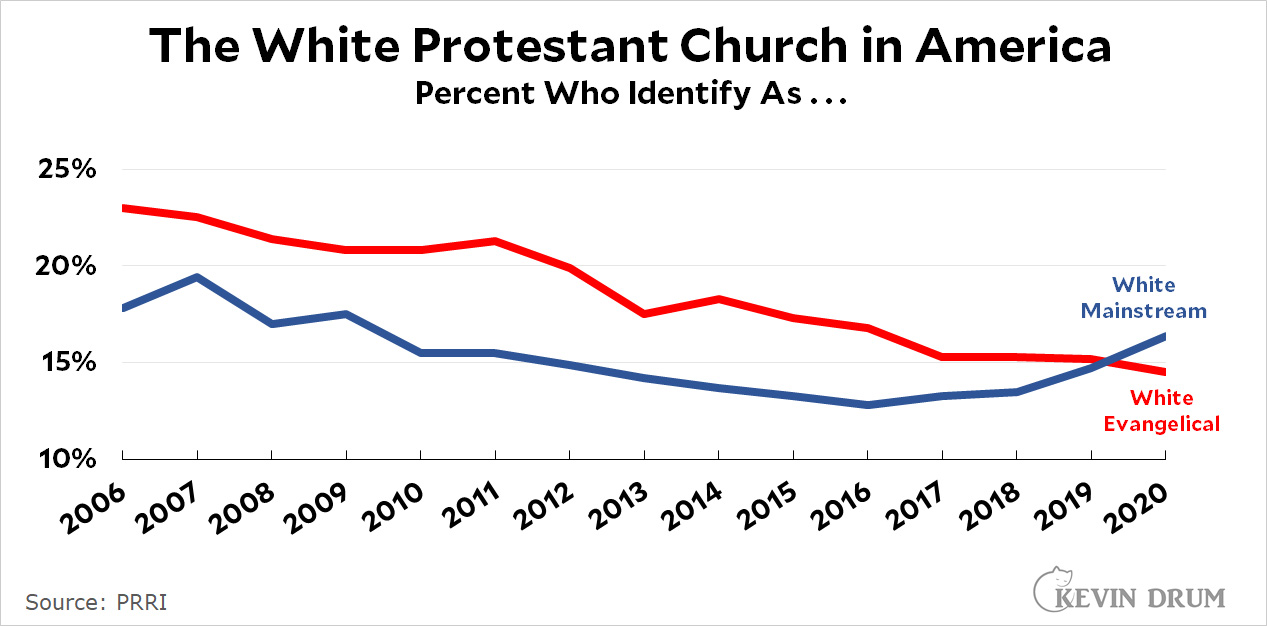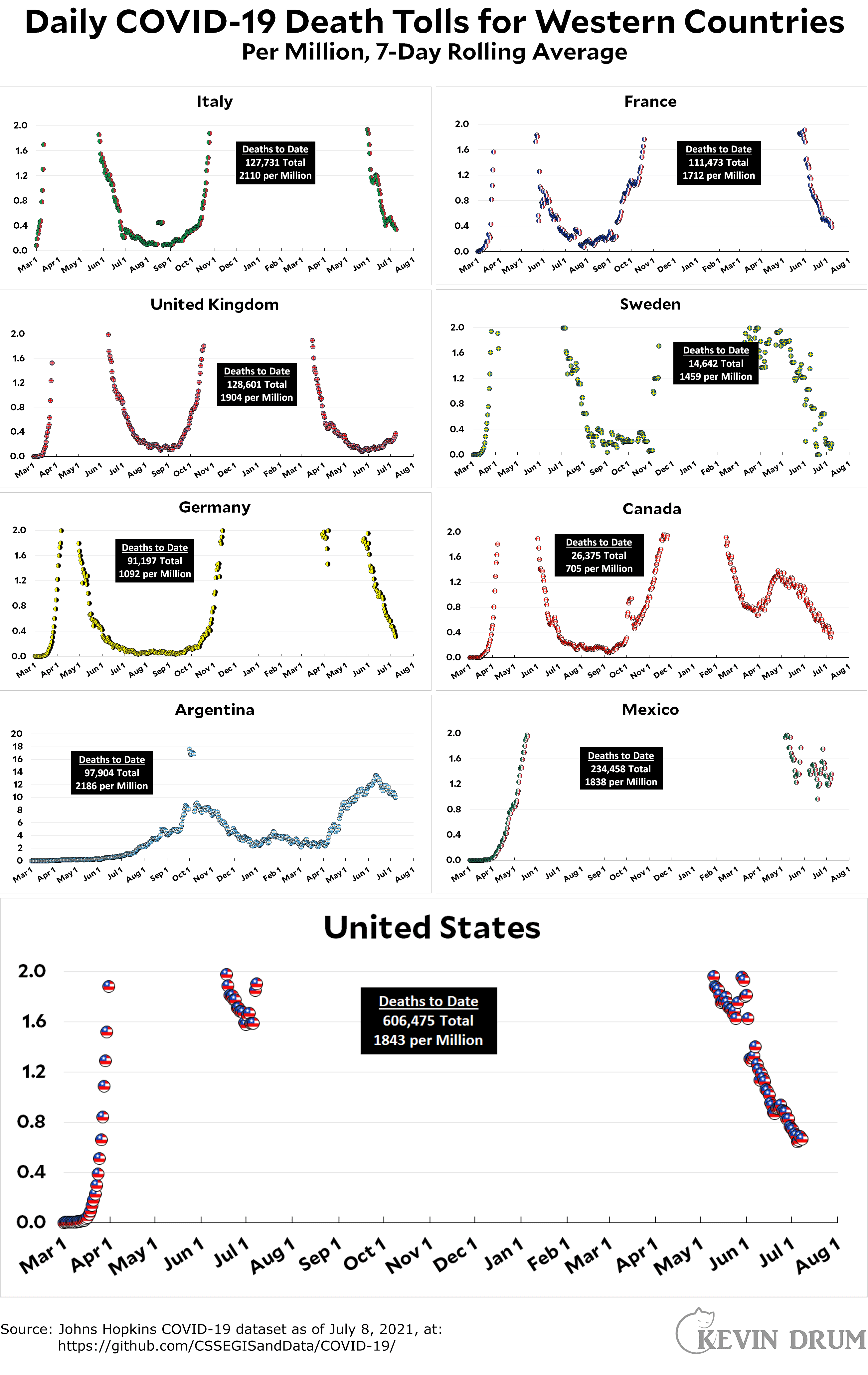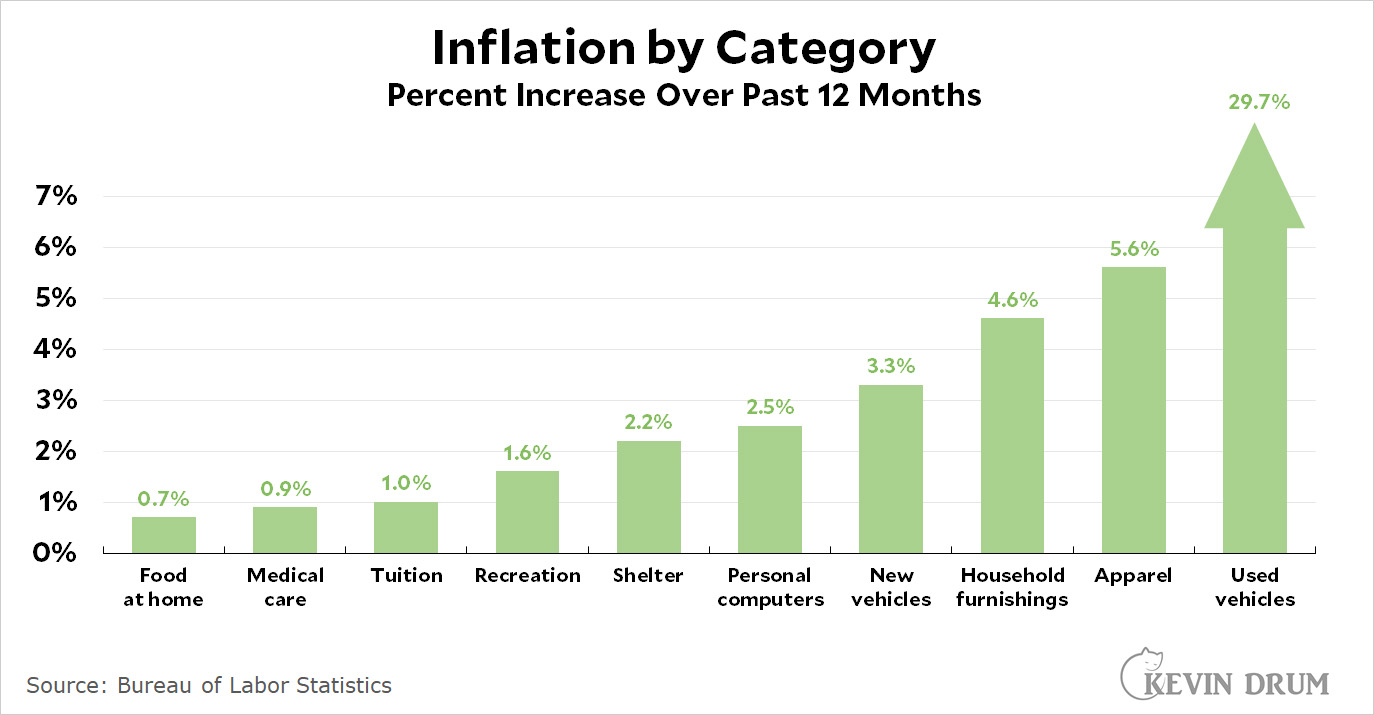The Public Religion Research Institute has released its latest survey of religion in the United States and it continues the string of bad news for white evangelical churches:

The number of white people who identify as evangelical has declined by more than a third since 2006, and this is a big part of the reason that white evangelicals were so eager to jump on the Trump bandwagon in 2016. After spending the '80s and '90s as a potent political force, white evangelicals spent the next two decades losing both membership and influence. By 2016 they were in panic and despair, so when Trump showed up sounding like an old time tent preacher they were ready to swoon. And they did.
But it's done them no good. Since 2016 the number of white evangelicals has continued to drop while mainstream protestant churches have regained more than a quarter of the followers they had lost.
White evangelicals made a deal with the devil when they decided to become an arm of the Republican Party during the Reagan era, and reviving that deal with an obvious charlatan like Trump hasn't worked. Perhaps the answer is for them to try acting like a church, not a PAC. You never know. It might work.







